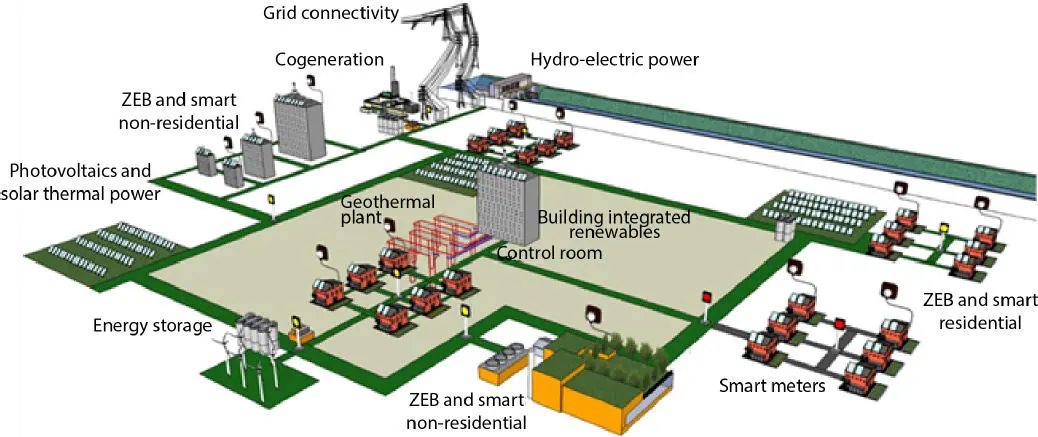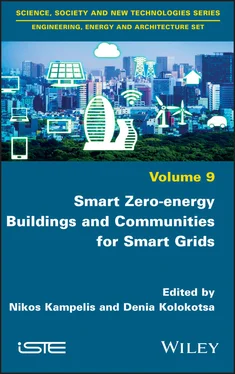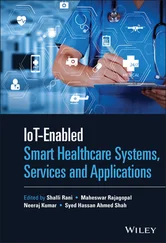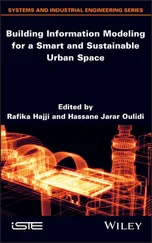3) Adaptation to the rapidly evolving ICT technologies, as well as exploitation of the internet’s capabilities, smart devices and applications (Zhen et al. 2012).
4) The necessary balance between the energy demand and energy production on the community, neighborhood and district level, contributing to the smart and sustainable urban environment.
Effective management of the intermittency of renewable energy sources power generation as well as of operational and capacity reserve in conjunction with the buildings’ energy demand profiles. In order to understand more clearly the role of smart grids in zero-energy communities, some examples are presented in the next paragraphs. More details on smart grids worldwide popularity can be found in Bartels (2012).

Figure 1.1. Components of the smart grid
The role of net energy metering and the time of use rate in the electricity demand of a zero-energy apartment community have been investigated (Gaiser and Stroeve 2014). The apartments’ community is placed in West Village in Davis, California. Smart scheduling is applied in order to achieve peak load shaving by using the various household appliances during off-peak hours. The peak demand is reduced by 18%, the part-peak demand by 32%, and the off-peak demand is increased by 12%. Since the apartments are using photovoltaics for electricity, the community’s occupants can benefit significantly if the surplus generation by the photovoltaics is maximized and sold to the grid during peak hours ( Figure 1.1).
Moreover, a low energy community configuration for the Island of Hawaii is proposed in Zhang (2009). The overall work included energy production using photovoltaics, storage systems using batteries and compressed air systems, demand response of buildings, passive cooling techniques for energy efficiency as well as microclimate and landscape assessment.
An advanced energy management and optimization model for the operation of the Leaf Microgrid Community is proposed by Kolokotsa et al . (2015). The aim of the model is to minimize the energy cost of the microgrid by performing a generation–consumption matching using genetic algorithms. The optimization procedure is supported by power load forecasting and energy production prediction (by the photovoltaics and hydroelectric plant) using artificial neural networks. While the optimization horizon is 24 hours ahead, the optimization and management procedure leads to an almost 6% reduction in the energy costs for the microgrid and significant cost savings for the community without extra energy investment.
Similar works include apart from genetic algorithms (Liang and Gooi 2010; Mohamed and Koivo 2012) the use of fuzzy logic and the particle swarm optimization method (Kyriakarakos et al . 2012) as well as the non-linear constraint multi-objective optimization method (Mohamed and Koivo 2007).
Another potential application of smart grids at the community level is the operation of small and medium enterprises (SMEs) which have multiple operational characteristics ranging from office buildings, retail, industrial, etc. and different energy patterns and needs (Rawlings et al. 2014). Though the potential for carbon reduction of SMEs is unclear due to the diversity of the end uses, smart grids can be a viable tool for SME decarbonization since additional data can be available through detailed smart metering. Therefore, the electricity loads of the SMEs can be discretized and the proportions that are available for load shifting or shaving can be more easily identified.
These can be space heating, cooling and hot water in the commercial sector, and heating or cooling in industry.
Last but not least, the social aspects of smart grids at the community level should be clearly examined. The fast promotion of smart grids’ capabilities and potential applications will be much easily understood by local communities if social inclusion is taken into account. The role of social experts in this aspect is of great importance (Wolsink 2012).
1.3. Conclusion and future prospects
Smart grids can be considered very promising for the energy and building environment industry due to the fact that they create a physical proximity between consumers and micro energy sources that help increase consumer awareness toward a more rational use of energy.
Moreover, smart grids can offer new opportunities for the reduction of gas emissions by creating technical conditions that increase the connection of devices and renewable energy resources at a low voltage level.
In addition, smart grids in the building sector offer a great opportunity for improving the power quality and reliability of energy sources due to the fact that it offers decentralization of supply, better supply and demand matching, reduction of transmission losses and minimization of downtimes. Thus, energy investments can be shifted from the expansion of transmission and large-scale generation systems to the energy efficiency in the building sector, that is, improving building fabric, increasing green infrastructure in the community, and improving indoor and outdoor environment interaction by using landscape solutions.
In addition, the widespread application of modular micro generation sources on a community level may contribute to the reduction of the energy price in the power market. Further, price reduction may be achieved by optimizing micro-generation operation and performing building load forecasting, which is possible due to the available data from the metering process. As a result, the smart grids can be viewed as aggregators of buildings, consumers and communities that will be empowered with better prices and valuable opportunities.
In order to reach the aforementioned goals, several challenges and drawbacks should be overcome. Technical challenges are mainly related to lack of experience, knowledge and competence necessary to successfully operate the micro generation energy sources as well as to interact with the building’s occupants. These aspects require extensive research efforts with an interdisciplinary perspective that will examine smart grids’ real time management, protection and control. Simultaneously, the role of the end users and building occupants should be enhanced and successfully incorporated. The Internet of Things can play a significant role in this direction as it can support raising awareness of end users and can provide user friendly applications for demand response and load management capabilities. In order to achieve this, specific telecommunication in infrastructures as well as open communication protocols should be provided to help manage, operate and control buildings within smart grids.
Another significant challenge is related to the increased initial installation cost which constitutes a great disadvantage. Specific policies and incentives should be provided by the governmental bodies to encourage investment in order to reach national carbon reduction goals.
Finally, significant effort should be put in the development of standards concerning the operational characteristics, the power quality, real time optimization and overall management.
Chapter written by Denia KOLOKOTSA.
Конец ознакомительного фрагмента.
Текст предоставлен ООО «ЛитРес».
Прочитайте эту книгу целиком, купив полную легальную версию на ЛитРес.
Читать дальше













